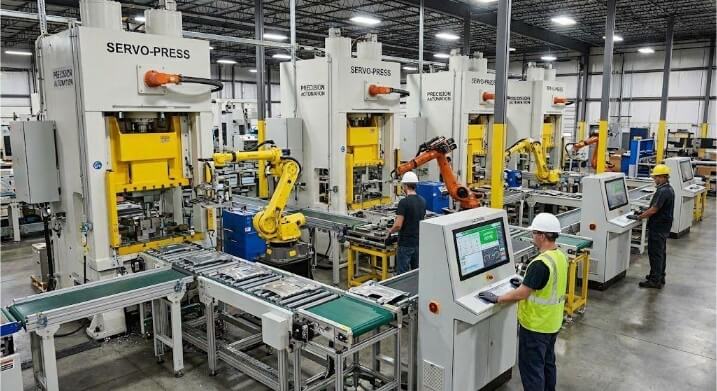Brass is a popular material in many industries. Its gold-like appearance, its remarkable properties, and its use for artistic purposes have made it a favorite. How can one achieve high-quality and precise results when casting brass?
Brass casting is an intricate process that involves melting brass alloy, pouring it into a mold, and creating the desired shape. Precision, attention to detail, and an understanding of material properties are required.
This journey is worth taking, and you’ll gain valuable insight into brass casting by the time you finish this article. You’ll be able to take your project to the next step.
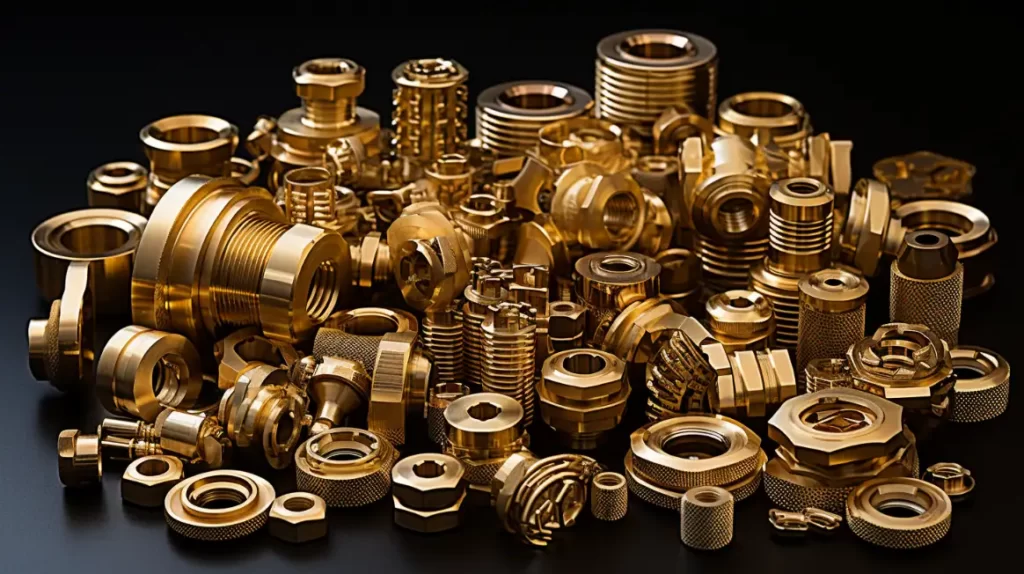
Brass Casting Basic
What is brass casting?
Brass casting is an innovative manufacturing process that involves melting brass alloy, pouring it into a mold, and shaping it to our specifications. Zinc and copper primarily compose this alloy, but its unique properties make it an excellent choice for casting. Brass casting allows us to produce intricate shapes and designs, resulting in components that are both functional as well as aesthetically pleasing.
During my many years at Dongguan Shengen Metal Co., Ltd, I have witnessed first-hand the versatility and resilience that brass has in different casting applications. This is a fascinating process combining art and science. It requires precision, expertise, and a thorough understanding of the material properties.
Brass Casting: Its Uses and Importance
Brass casting is a crucial component in manufacturing because it produces complex parts with high accuracy and consistency. This process is essential in many industries and has become a part of modern life.
Brass casting is used in the automotive industry to produce durable, reliable parts that can withstand road rigors. Brass parts are lightweight and robust, which makes them ideal for the aerospace industry. This contributes to safer and more efficient flights. Brass casting is also used in art and decor to create intricate sculptures, decorative pieces, and other items that showcase the material’s elegance and beauty.
Safety Precautions for Brass Casting
Shengen takes its responsibility to ensure safety at work, particularly during processes such as brass casting, which involve high temperatures and possible hazards, very seriously. To protect our employees and to ensure a safe working environment, we must take the necessary precautions and measures.
Personal Protective Equipment
We must equip our workers with Personal Protective Equipment for brass casting; this is non-negotiable. Heat-resistant gloves and face shields are essential, as well as long sleeves made of flame-resistant fabric, safety goggles, and clothing with long sleeves. These items of equipment protect against molten metal splashes and intense heat. They also help prevent potential burns. We take responsibility to ensure that everyone in our team knows the importance of wearing PPE correctly and understands its importance very seriously.
Ventilation and Workspace Safety
Ensuring a well-ventilated work area is crucial to remove the fumes and gases produced during brass melting. We provide that our Shengen facilities have proper ventilation systems to maintain a safe, breathable environment. Additionally, keeping your workspace free of clutter and clean reduces accidents and increases safety. We adhere to strict housekeeping regulations, ensuring that all equipment and tools are properly stored and that the work area is kept clean and free of hazards.
Fire Safety Measures
Brass casting is a high-temperature process, so fire safety is a priority. In our facilities, we have strategically placed and made fire extinguishers and fire blankets readily accessible for emergencies. We conduct regular fire safety drills to ensure all staff are familiar with emergency procedures.
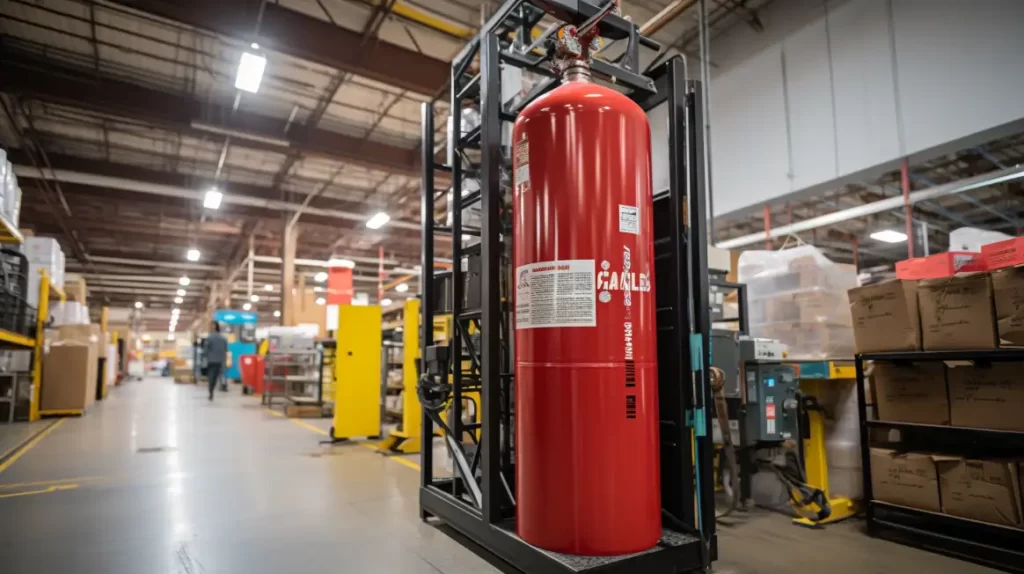
Materials and Equipment for Brass Casting
Brass casting is a complex process that requires the use of the correct materials and equipment. We at Dongguan Shengen Metal Co., Ltd pay attention to the suitability and quality of every component used in the casting process. Let’s look at the equipment and materials crucial to brass casting.
Types of Brass Alloys
Brass alloy is a mixture of zinc and copper, with other elements added to improve specific properties. Casting results are directly affected by the type of brass alloy that you select. Yellow brass, composed of about 70% copper and 30% Zinc, is famous for its color. Red brass is a more expensive metal with a higher copper concentration. It’s also known for its high corrosion resistance.
We are here to help you make the right choice.
Crucibles and Furnaces
The crucible and furnace play a central role in the casting of brass. The crucible, made from heat-resistant materials, holds the melting brass. It must withstand high temperatures without breaking or contaminating the brass melt. It must reach and maintain high temperatures to melt brass. These can be as high as 1000degC or 1832degF.
The latest technology ensures that the brass is heated precisely and consistently, providing high-quality casting.
Molds and Patterns
For shaping the brass molten, molds and patterns are essential. The way is created based on the final part design used to make the cavity in the mold. Molds are usually made of sand, ceramic, or both. They must be strong enough to resist the high temperatures of molten brass and capture every detail in the pattern.
We pay close attention to the design of our molds and patterns. They are made with precision and quality and result in flawless products.
Tools and Accessories
Brass casting requires a variety of tools and accessories. Workers use tongs to manage the hot crucible and skimmers to remove impurities. Safety equipment is also necessary to protect the workers.
All tools must be in excellent condition, and our team must be well-trained. This ensures safety and precision at every stage of the project.
Prepare the Workspace for Brass Casting
The preparation of the work area is just as necessary as the actual casting process in brass. We know how vital an adequately prepared workspace is for our employee’s safety and the success of the casting project. We’ll walk you through the steps to set up our workspace.
Setting up the Casting Area
The heart of our operation is the casting area. It must be spacious enough to allow our workers to safely move about while accommodating all the necessary materials and equipment. Heat-resistant surfaces and easy cleaning reduce the risk of accidents and ensure a safe work environment. To streamline the process, we make sure all tools and equipment required are easily accessible.
Proper Ventilation Installation
In a cast workspace, ventilation is essential. Removing fumes from the melting process is crucial to maintaining a healthy breathing environment. At Shengen, our casting area features industrial ventilation systems placed strategically. These systems guarantee optimal airflow and the rapid elimination of hazardous fumes. We conduct regular checks to maintain them in excellent condition.
Organizing Tools and Materials
Well-organized work areas are more efficient and safer. Everything has a home and a place. The tools are arranged neatly and are easily accessible. Materials are stored in an organized manner to avoid clutter. This helps to prevent accidents and ensures our cast brass process runs smoothly.
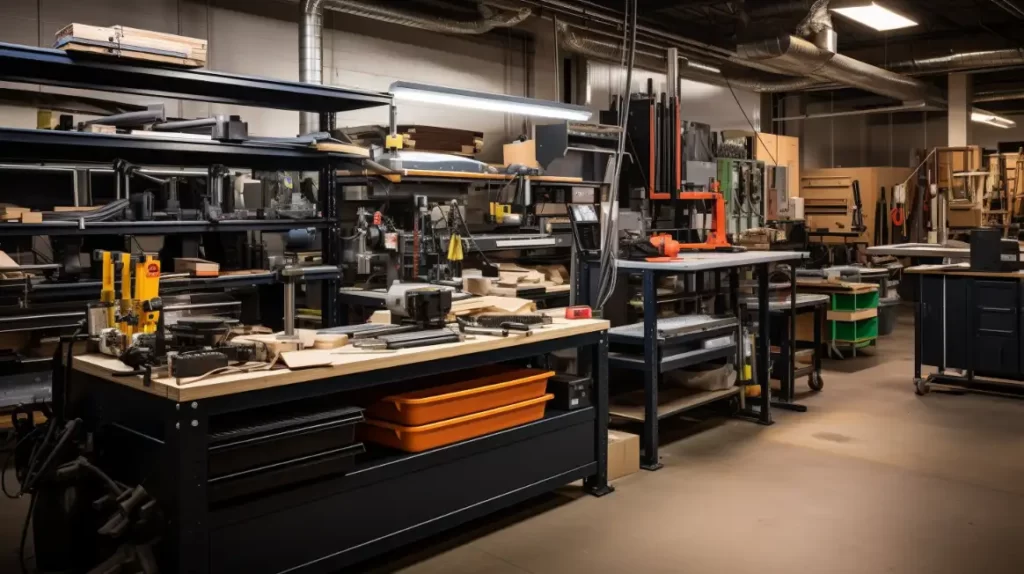
Brass Melting Process
Brass melting is an essential stage of casting. It requires precision, control, and a complete understanding of material properties. This is how we approach brass melting:
The Right Temperature
First, determine the correct temperature. Brass melts at temperatures ranging from 900degC to 940degC (1652degF up to 1724degF) depending on the alloy. It is crucial to maintain the right temperature so that the brass melts evenly and reduces the chances of defects.
Shengen’s experienced team monitors temperature with advanced equipment throughout the entire process.
Melting Brass Alloys
We melt the brass alloy after we have set the temperature. In the furnace, the brass is heated slowly in a high-quality crucible. We take our time, ensuring that the brass melts evenly and that there are no cold spots in the final product.
The expertise of our team and their attention to detail are vital in this step, as they ensure that the brass is in the right state for casting.
Flux & Deoxidizers
We use deoxidizers and flux to ensure the brass is pure and improves its flow. We add change to molten brass as an additive to draw impurities to the surface, making them easier to remove. Deoxidizers reduce the oxide content of the melt and prevent the formation of gas porosity.
Mold Preparation for Brass Casting
The mold preparation is an essential part of brass casting, and we are meticulous in every aspect. Preparation of the mold is crucial because it determines the final shape, surface finish, and dimensional accuracy. We’ll explore the most important aspects of mold preparation.
Different types of molds
Brass casting uses a variety of molds, each with different purposes. Sand molds are prevalent because they are low-cost and can produce complex shapes. However, short production runs are the usual application for these molds. Metal permanent molds are more durable and used for larger production runs. However, they cost more initially.
Our team of experts will help you choose the best type of mold for your specific needs to ensure optimal results.
Mold Design and Assembly
The quality of the part is directly affected by the design of the mold. The mold must accurately reflect the dimensions of the final piece and allow for shrinkage when the metal cools. Molds also need gates and risers. These are channels that will enable molten brass into the cavity of the mold and provide additional material to compensate for shrinkage.
The mold is then assembled and ready for casting. At Shengen, our skilled technicians meticulously create each mold, ensuring the final product stays true to its original design.
Mold Preheating
Preheating the mold is a crucial step to prepare for casting. The correct temperature ensures the brass flows into the mold evenly and without defects. This also reduces the formation of gas pores, improving the casting quality.
We use state-of-the-art equipment to pre-heat the molds precisely to ensure consistency and quality of every cast part that we produce.
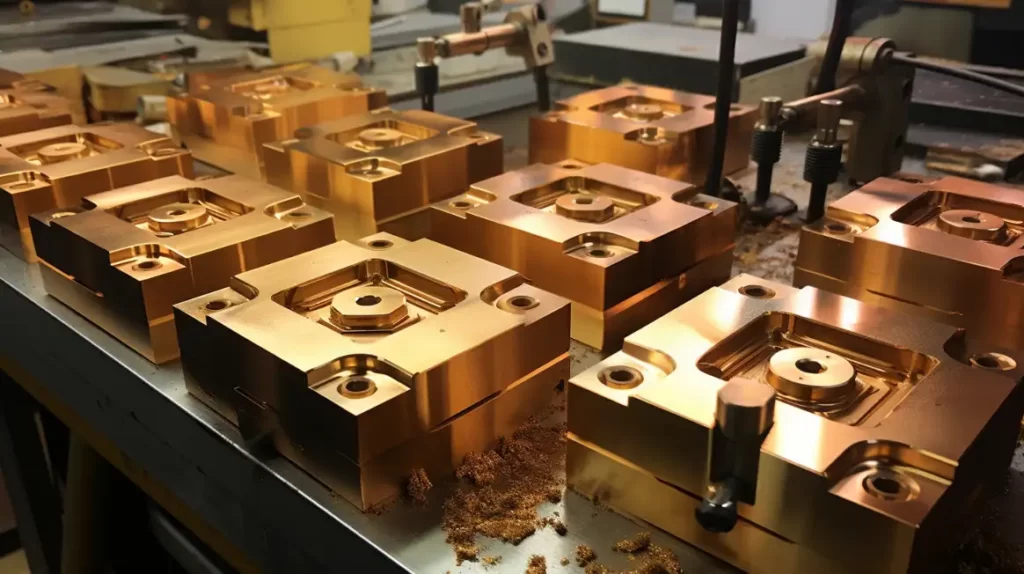
Pouring Brass
Pouring brass in the cast brass process is a delicate step that requires precision, skill, and safety. Our team of experts handles this crucial step with the utmost attention, ensuring flawless performance. We will explore the most essential aspects of pouring.
Crucible Safety and Handling
When handling a crucible full of molten metal, it is crucial to follow safety procedures and use the proper equipment. To protect against heat and splashes, our team wears personal protective equipment such as heat-resistant gloves and face shields.
Tongs explicitly designed for handling crucibles are used to ensure a safe grip and minimize the risk of accidents. Safety measures are also in place to protect our workers from any unforeseeable incidents.
Pouring Techniques
Pouring is crucial to a successful casting. The brass must be poured smoothly into the mold, filling each cavity and reproducing with precision the design. Our technicians are skilled in running techniques to ensure a controlled and steady flow of molten metal.
We monitor the temperature of both the brass and the mold to ensure they are at optimal levels for a successful pour. Controlling this process helps minimize the risk of defects, including misruns and cold shuts.
Avoiding Common Pouring Mistakes
Pouring brass is a challenging process. Avoiding common mistakes will help you achieve a successful result. Running brass at the incorrect temperature, flowing too fast, or using an improper mold are all examples. Shengen’s team has the experience to overcome these challenges.
Before pouring, we checked everything, from the temperature to the design of the mold. This proactive approach minimizes the risk of error, leading to brass components that meet high-quality standards.
Solidification and cooling
After the pouring stage, the cooling and solidification stages are crucial in the brass cast process. We’ll explore why cooling and solidification is so essential.
The Importance Of Cooling
The cooling process is essential to the cast brass procedure since it allows the molten metal to solidify into the final form of the mold. If done correctly, the metal will solidify evenly throughout the cooling process. This reduces the chances of distortions and internal stresses compromising structural integrity.
Shengen’s team closely monitors cooling to ensure it occurs at a controlled pace. This attention to detail helps achieve a casting that is not only dimensionally correct but also free of internal defects.
Factors that Affect Solidification
The alloy composition, the pouring temperature, and the mold temperature all influence the solidification process of brass. Rapid cooling can produce a finer grain structure, while a slower cooling process can create a coarser design.
We optimize the conditions to achieve the desired characteristics of the final product. We can fine-tune our brass casting process to achieve optimal results because of our extensive experience and expertise.
Post-Pouring Inspection
It is essential to inspect the casting thoroughly after it has cooled. This will ensure that the product meets our high-quality standards. Our quality control team reviews the casting to check for surface flaws, dimensional errors, and internal flaws.
Our facility employs various inspection techniques, including visual inspection, non-destructive tests, and more, to ensure the quality of every casting.
Remove the Casting
The removal of the brass casting is a crucial step in the process. We will now look at the steps involved in breaking the mold, as well as the cleaning and finishing.
Breaking the Mold
You must remove the casting from the mold when the brass solidifies completely. When using a sand mold, we must remove the mold material to reveal the casting. This is a delicate procedure that requires precision to avoid damaging the casting during removal.
Shengen’s skilled technicians are well-trained to safely and efficiently break the mold. This approach ensures that you can remove the casting with minimal risk. We use specialized equipment to maintain the integrity of the cast throughout the process.
Cleaning and Finishing
Once we remove the casting from the mold, the next crucial step is to clean and finish it. This step is essential to achieve the desired final finish and to ensure the removal of all mold material.
To remove residual mold material, we use various cleaning techniques, including sandblasting, tumbling, and other processes, to achieve a smooth finish. Following the cleaning, we proceed to the final stage of finishing. This stage may encompass machining, polishing, or other processes tailored to the part’s requirements.
Shengen’s finishing team takes great pride in its work and pays close attention to every detail. They ensure that each casting meets Shengen’s high standards for quality and aesthetics. We know that finishing touches are as important as casting itself and are committed to excellence throughout the process.
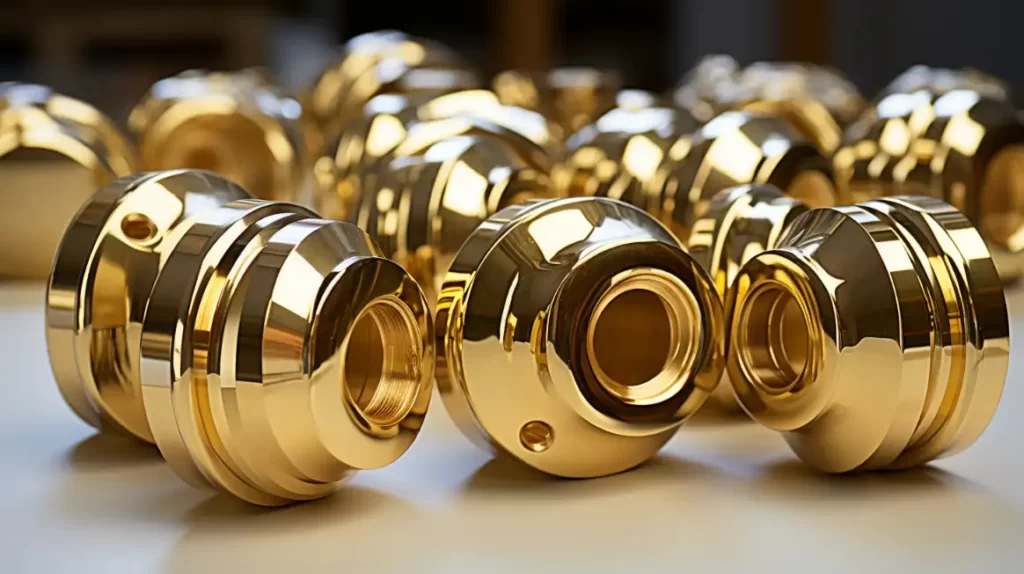
Quality Control for Brass Casting
It is essential to ensure that every brass casting meets the high standards we have set. This section will cover our approach to quality assurance, which includes inspection, defect detection, and correction, as well as ensuring dimensional precision.
Inspection of Brass Casting
After the casting process is complete, each piece undergoes a thorough examination. Our team of experts scrutinizes every casting, searching for surface imperfections, material inconsistencies, and other issues that may affect the performance or aesthetic appeal of the part.
We use a range of inspection techniques, including visual checks, as well as more advanced methods like X-ray imaging and ultrasonic testing. This ensures that our evaluations are as accurate as possible. Our commitment to quality stands firmly on the foundation of a rigorous inspection approach.
Defect Detection and Correction
Early detection of defects is essential because it allows us to correct any issues before they reach the client. Our quality control team has the skills to identify common casting defects like porosity, surface irregularities, or inclusions. They also have the tools and knowledge necessary to fix these problems.
We don’t hesitate to invest in the newest technology and train our team members always to maintain the highest quality standards. We will quickly correct a part that does not meet the criteria we have set. This may mean reworking it or starting from scratch.
Dimensional Accuracy
Precision is essential, especially in industries that require precision, like automotive and aerospace. We use the latest measuring equipment at Shengen to ensure our castings are accurate and meet client specifications.
Heat treatment after cast brass
At Shengen, we subject our brass components to post-casting heat treatments, following a meticulous casting process and stringent quality control. This step is essential for improving the material properties and ensuring the brass meets our client’s requirements. Let’s look at the methods of annealing and tempering brass.
Annealing Brass
The annealing process is a heat-treatment method where brass is heated to a specific temperature, maintained for some time, and then slowly cooled. We employ this heat treatment process to diminish internal stresses, bolster elasticity, and augment the material’s overall workability.
We pay special attention to the parameters of annealing at Shengen. This includes the precise control of temperature and cooling rate. This meticulous management leads to a uniform microstructure essential for maintaining consistency in material properties across the components.
Tempering & Strengthening
After annealing the brass, we can also apply strengthening and tempering treatments depending on the final properties desired. The brass is reheated to a temperature lower than its annealing temperature to improve its hardness and strength.
Shengen’s skilled technicians are experts at fine-tuning tempering processes to achieve the perfect balance of strength and flexibility for our clients. This ensures that our final products not only meet but also exceed the performance requirements of our clients.
Patina and Finishing
In the final stages, our brass casting process in Shengen focuses on improving the aesthetic appeal. Additionally, the method includes applying a patina, which helps achieve a sought-after aged or antique appearance, ensuring the surface finish is flawless. Let’s examine these two crucial aspects.
Patina application
Patina is an oxide-colored coating applied to the surface to cause controlled oxidation. The patina not only protects the metal but gives it an aged look.
We are proud of our ability to create a variety of patina finishes, from subtle antiquing to bold verdigris. Shengen’s skilled artisans apply the patina with precision, ensuring it is durable and uniform. This process requires an eye for detail and a steady hand, as the final patina appearance can be affected by environmental conditions and application techniques.
Polishing & Surface Finishing
The next step after applying a patina is to polish and finish the surface. This is the only way to achieve a flawless, smooth surface that will enhance the tactile and visual quality of your brass component.
Shengen’s team uses various tools and finishes to polish the brass. From mechanical polishing to achieve a high-gloss finish to hand-polishing to create intricate details, we have it covered. We know that the final finish is an essential aspect of the overall quality of the product, and we are committed to achieving excellence.
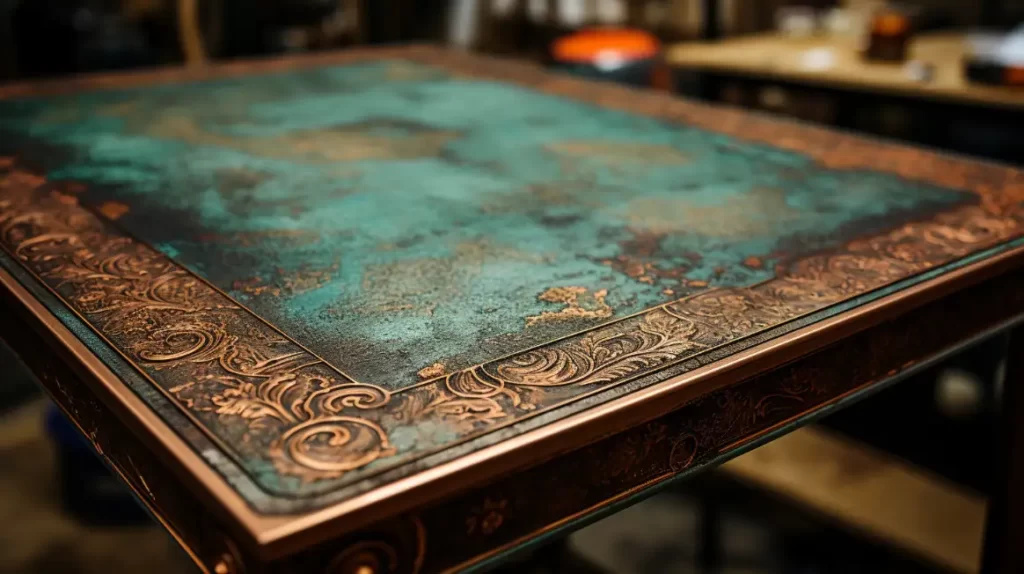
Environmental Considerations
We are committed to minimizing our environmental impact. Brass casting is an integral part of our business, but it also presents some ecological challenges. We are committed to adopting eco-friendly practices and ensuring proper disposal of waste.
Brass Castings that are Eco-Friendly
The materials we use are the first step in our commitment to environmentally friendly brass casting. We aim to use recycled brass as much as possible to reduce the need for new materials. Recycling metals is more energy efficient than mining and processing raw materials, so it not only helps conserve natural resources but also reduces production costs.
Our focus is also on improving the efficiency and effectiveness of our cast brass process to reduce energy and waste. We optimize our equipment and procedures to maximize the yield of our materials and minimize scrap and rework.
Proper Waste Disposal
Our environmental responsibility is critical to the proper disposal of waste. Brass casting generates a variety of debris, such as spent molding materials, melt slag, and other byproducts.
We have established strict protocols for the disposal and handling of these materials at Shengen. To handle waste, we collaborate with certified waste disposal companies, guaranteeing that all waste undergoes treatment in compliance with environmental regulations.
We not only focus on handling waste responsibly but also reduce our waste generation. This includes not only optimizing processes but also investing in technologies that enable us to recycle and reuse materials within our operation.
Brass Cast Parts for Artistic and Decorative Use
We are incredibly proud of our ability at Shengen to take our brass casting skills beyond the industrial realm and into art and decor. Our artisans can turn brass into sculptures, jewelry, and art pieces that showcase the beauty and versatility of the material.
Art Pieces and Sculptures
Brass’ warm golden color lends itself to beautiful artistic expressions. Our team has the skills to produce various art pieces and sculptures that cater to varying aesthetic tastes and themes. And our team works closely with designers and artists to help bring their visions into reality with precision.
Our advanced cast brass techniques capture even the finest details of each piece with precision. We are committed to producing high-quality components, whether they’re for aerospace applications or unique sculptures.
Custom Jewelry
We also offer custom jewelry. Our pieces are unique and exquisite and capture the imagination. Brass jewelry that is both beautiful and durable will last a lifetime.
Our team at Shengen is meticulous in every detail. We ensure that each piece meets Shengen’s stringent standards of quality. We are proud of our ability to combine artistic precision with technical perfection, creating brass jewelry that is both beautiful and expertly crafted.
Industrial Applications
Brass casting is a skill that we have mastered for a variety of industrial applications. Industries such as automotive and aerospace extensively utilize our brass components.
Brass Components for Manufacturing
Brass components are essential in the manufacturing industry. They are highly prized because of their high strength, excellent machinability, and corrosion resistance. We supply precision-engineered brass components that meet the exact specifications of various industries.
Our team provides expert advice to manufacturers on the selection of materials and design optimization. Our collaborative approach ensures the brass components that we produce fit seamlessly into the assemblies of our clients and enhance their overall performance.
Automotive and Aerospace Uses
Automotive and aerospace industries require high levels of material performance and precision. Brass is the material of choice in these industries because of its unique combination properties.
Within the automotive sector, manufacturers incorporate our brass components in engines, transmissions, and electrical systems. The durability and corrosion resistance of brass components contribute to the overall safety and reliability of vehicles.
Brass is also a great choice in aerospace due to its strength-to-weight ratio. Our parts are lightweight and can withstand the harsh conditions of flight or space exploration.
Conclusion
Brass casting requires precision, patience, and practice. You can master the technique by following the steps above and paying close attention to details. Safety and quality are paramount.
We cherish the trust our clients place in us, and we remain steadfast in our commitment to delivering exceptional products and services, forging ahead to new heights of excellence and collaboration. Together, we create not just brass components but lasting partnerships and unparalleled value. Thank you for considering Shengen as your trusted partner in brass casting; we look forward to contributing to your success.
FAQs:
Can I cast brass at home?
It is possible to cast brass at home, but you will need the right equipment and an understanding of how it works. Due to the high temperatures required to melt brass, safety is of paramount importance. Make sure you have the right tools, the proper personal protective gear, and a well-ventilated workspace. For precision parts or complex designs, however, we recommend that you seek professional casting services to ensure the accuracy and quality of the final product.
What are some common mistakes in brass casting that you should avoid?
In brass casting, common mistakes include improperly preheating molds, which can lead to surface defects and insufficient temperature control, resulting in incomplete melting. To achieve a high-quality cast, it is also essential to ensure a clean melt free of contaminants and avoid excessive turbulence when pouring.
How can I choose the best brass alloy for my project or application?
Brass alloys are chosen based on the specific needs of your project, including strength, corrosion resistance, and machinability. Consult material experts or brass casting professionals to determine the best alloy for your project, ensuring maximum performance and durability.
Brass casting poses health risks.
However, it is essential to note that brass casting can pose health hazards if proper safety measures are not in place. To further reduce these risks, one must use the appropriate safety equipment, ensure there is adequate ventilation, and follow all safety guidelines diligently.
What is the price of setting up an area for brass casting?
The cost to set up a workspace for brass casting can vary greatly depending on the size of the operation and the required equipment. This is a significant investment as it includes furnaces, molds, safety equipment, and ventilation systems. If you want to cast brass parts in large quantities or with high accuracy, working with a professional company such as Shengen is a cost-effective option.
More Resources:
Understanding Brass Alloys – Source: Xometry
Maintaining Your Casting Equipment – Source: Themetalcasting
Common Brass Casting Defects – Source: Ijiset
Hey, I'm Kevin Lee

For the past 10 years, I’ve been immersed in various forms of sheet metal fabrication, sharing cool insights here from my experiences across diverse workshops.
Get in touch

Kevin Lee
I have over ten years of professional experience in sheet metal fabrication, specializing in laser cutting, bending, welding, and surface treatment techniques. As the Technical Director at Shengen, I am committed to solving complex manufacturing challenges and driving innovation and quality in each project.




